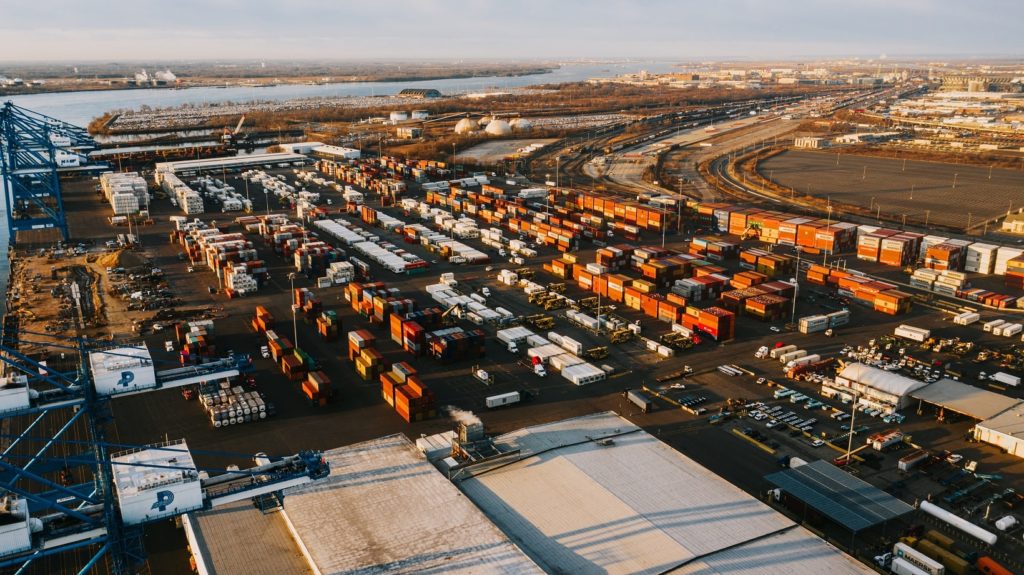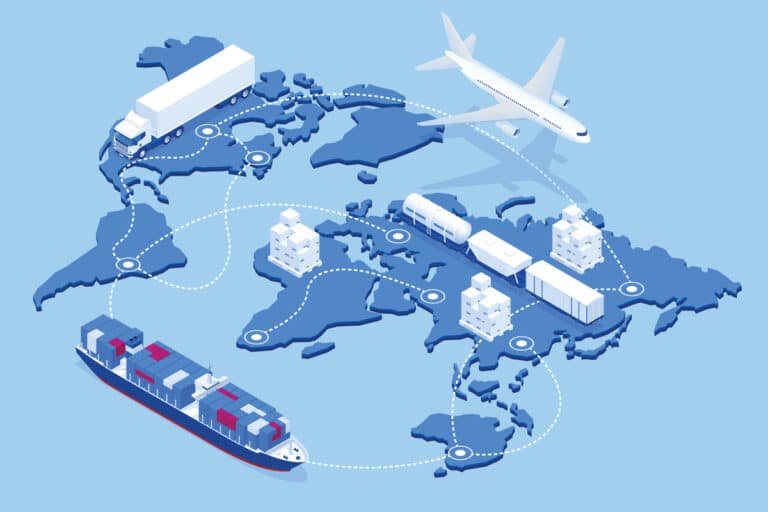From pricing strategies to sourcing and procurement processes, there are several elements in a business’s supply operations that can be modified to maximize the efficiency and cost-effectiveness of a business. Given frequent supply chain disruptions and squeezing margins, reducing costs is more imperative than ever to ensure the survival of a wholesale business.
How can you reduce your wholesale supplier costs?
Gembah has created a comprehensive guide to help your business decrease wholesale supplier costs. In the process, we also assist you in creating the most idealistic supply chain model customized for your business.
We’ll be covering:
- Supply chain optimization
- How to approach supply chain analysis
- Understanding the strategies you can use when sourcing and procuring
- The importance of knowing tariffs
- The value of integrating technology
Let’s start with the basics.
1. Supply chain optimization and cost reduction
To ensure your brand is achieving peak efficiency, creating a constructive supply chain and managing it systematically is vital. Bearing in mind supply chain optimization is a complex process, we’ve broken down the various factors that need to be taken care of. But, before we get into that, let’s look at what exactly supply chain optimization comprises:
What is supply chain optimization? How can it help you save time and money?
In essence, a supply chain is a network of the various entities that assist in the process of converting raw materials into finished products. The structure of a supply chain mainly consists of suppliers, vendors, consultants, warehousing, and logistics, with other assisting entities as well.
With supply chain optimization, the aim is to have these entities integrated with one another as seamlessly as possible as well as operating at peak efficiency. Optimizing your supply chain in this way saves your brand’s resources without compromising the quality of your product.
Supply chain optimization is the first step towards improving the profitability of your wholesale business. A successful supply chain optimization process consists of three phases:
- Supply chain network optimization:
Network optimization addresses the elements of networking of your supply chains, such as manufacturing and warehouse locations and schedules, as well as the flow of products between these entities. This part of the process seeks to find an optimal merging of the various warehouses and distribution facilities that your company uses.
- Supply chain planning optimization:
This phase revolves around the strategic planning of the demand and supply of your product. This can include inventory planning, predicting demand, and the optimization of your manufacturing and distribution to acclimate to supply and demand requirements efficiently.
- Supply chain execution optimization:
Execution optimization addresses the everyday execution elements such as transportation management, supply chain visibility, and inventory which are essential for ensuring the executory operations are aligned with your business’s demands.
Tackling each of these phases of supply chain optimization helps you identify the inefficiencies of individual components in every phase. This creates a path for your business to build more efficient supply chain strategies in the future.
Once the three phases are outlined, they lay a strong foundation for following the supply chain optimization processes by enabling you to:
- Blueprint your process: Map out the entire supply chain process post strategizing (covered later) and look out for cost-optimization opportunities within the supply chain.
- Communicate effectively: Identification of workflow inefficiencies and timely correction of these inefficiencies prevents any ripple effects poor communication can have on the entire process.
- Automate processes: Scale your production via automation of repetitive and slow tasks.
- Utilize data and analytics: Study trends and data to optimize inventory management and logistics at every step of the way.
The next step is to analyze your supply chain and determine which category of business your brand falls into by answering questions like: How seasonal is your demand? Does your product require customization? What are your product design requirements?

2. Supply chain analysis to improve the cost-effectiveness of various business stages
After the optimization comes the analysis. An in-depth supply chain analysis will help you gain an edge over competitors, apply automation wherever required and bring transparency to your business processes. This can all eventually lead you to save costs.
One common stage of a wholesale business that can be radically optimized using supply chain analysis is the cost of production.
Every brand’s supply chain is unique and will therefore require paying closer attention to certain elements of the supply chain versus others. However, there are standardized approaches that any business can use as a basic strategy. The approaches can be split into 3 different parts, strategic, tactical, and operational analysis.
- Strategic Analysis: This method comprises looking at the big-picture elements of your product’s supply chain and making sure they align with the general execution and operation of your company. Some questions you must address are:
- Is the location of the manufacturing plant ideal for workflow efficiency?
- Should you go with a more sustainable supplier and incur higher costs?
- Should you go with a single supplier or multiple? How will it affect the cost-efficiency of production?
- Tactical Analysis: This analysis delves into the finer details of your supply chain and plays an important role in controlling costs. All the intermediaries and distribution channels, sources of raw materials, and warehousing elements are evaluated to see how well they fit into the existing supply chain. Some questions to ask yourself:
- Is the raw material sourced at the best price?
- How does the location of your warehouse and distribution center influence the overall production costs?
- Are your distribution channels cost-effective?
- Operational Analysis: This analysis helps in figuring out the planning of the execution processes. Some queries you can raise for consideration here are:
- How to monitor logistics to enable raw materials to reach production in the most economical way?
- What is the most inexpensive and fast route to coordinate the resources?
- How do we ensure a quality product and on-time delivery within a given budget?
These analyses help ensure the various sectors of your business are in sync and without complications at their foundational level. All these methods can assist your brand in optimizing your supply chain into the smartest and most sustainable version possible.
Now that we’ve identified the inefficiencies of your supply chain and analyzed its various aspects, what’s next?
3. Pick the right strategy to implement for finding the right manufacturer
Supply chain strategies are integral for product and brand growth. Choosing the right strategy for your business is critical to improving your profitability. Additionally, the right strategy provides both flexibility to your brand if anything goes wrong, as well as the capacity to deal with unforeseen events in the future.
Strategizing begins right at the sourcing and procurement stage of your business. To begin strategizing, you must first identify the priorities of your business. In the process of procuring and selling, a trade-off has to be made between the four core supply chain elements:
- Cost
- Schedule
- Robustness
- Customer value
The best strategies will ensure a perfect balance between everything to ensure all the elements come together in the most profitable manner. Robustness and customer value must be maximized at the lowest possible cost and organized schedule.
How can that be done?
Keeping these four factors in mind, there are six basic strategies. You can pick one or a combination of the following strategies to best meet your business requirements.
- Efficient Flow:
If your product shows a predictable demand pattern, you have it easy. All you have to do is ensure that your business’s components function together in an efficient flow to get your products delivered within given timelines and at a consistent pace. Flow in the supply chain is what needs to be prioritized.
Both inventory control and demand forecasting, as well as network-wide communication, are critical attributes. If these things are taken care of, you almost always have the right amount of inventory required to fulfill your consumers’ needs, thereby cutting costs on warehousing and storage.
- Efficient Cost:
This approach aims at minimizing the price at every point of your supply chain. All aspects are kept at low cost, from providers and manufacturing to logistics. Price is the focal point at every step of the way, thereby prioritizing cost savings.
- Efficient Speed:
This particular strategy is used when the time to market and adding product variation are of maximum importance. Costs become secondary, while the ability to make changes to your product, manufacturing, and shipping become your main points of interest. The focus is on the cost of time, rather than the money spent directly.
- Customization Responsiveness:
Adopt this strategy if your product requires customization or customer configuration. Vendors are picked by their ability to deal with unique, low-volume production to meet the customized needs of the consumers. Automation and advanced AI tools are vital to efficiently integrate customization into manufacturing, thus enhancing the cost-efficiency of production.
- Demand Variability Responsiveness:
If your product has a fluctuating demand, you need a strategy where the speed of your supply chain can be adjusted to the various seasons of demand quickly. Your vendors will need to be able to work with short lead times, as this strategy prioritizes the ability to scale up and down the market. Optimizing lead times can significantly minimize opportunity costs.
- Responsive To Customer Problems:
A combination of customized and unpredictable demand can halt production unless you know exactly what your customers want. In this scenario, design and manufacturing complement each other. Vendors who are fast, responsive, and communicate are sought after. Capacity, not inventory is the focus.
Thus, picking the right supply chain strategy for your business can help you choose the right entities in your supply network. From suppliers and vendors to warehousing and logistics, the entities you select will be highly impacted by your strategy. The correct decisions can help you save significant time and money.
Carefully tracking expenses and checking trends over time can help you assess which strategy fits your business requirements, also enabling you to cut out inefficient and costly practices.
Now that your supply chain is almost set in place, and you’re already optimizing for costs, there’s one final consideration to make that often influences where and how your supply operates. Tariffs.

4. Know your tariffs!
An often overlooked element of the supply chain are tariff payables. And they matter! Tariffs can range from 0 to 25%, in turn highly impacting the cost of your raw materials and finished product.
A careful examination of the Harmonized Tariff Schedule can facilitate answering questions like:
- How much will it cost to import the product?
- How many tariffs are to be paid on manufacturing components and raw materials?
- Can small changes in the product lead to substantial cost savings in tariffs?
- Can a shift in the manufacturing plant reduce your tariff payments?
..and so on.
New changes to the Harmonized System in 2022 will further enable you to adapt new, cost-saving technologies in your production processes. For anyone importing raw materials and products, a review of the HS is a must to ensure smoother logistics when importing these products.
After all, you don’t want your products to remain held up at customs while you spend weeks clearing the paperwork.
Moreover, considering tariff costs at every step of your production process will play a key role in the selection of your manufacturing partner and determining the plant location. Ultimately, the whole product development process can be optimized to ensure the least tariffs are paid on production.
5. Technology and automation
Finally, enhanced use of new technologies can help reduce costs in three ways:
- Improving security
- Lowering communication costs
- Saving valuable floor space
Investment in technology can thus help businesses maintain a competitive edge while improving their profitability to a large extent.
Conclusion
While saving costs is critical to every business, it should not be accompanied by a reduced quality of the product. Examinations should be conducted at every step of product development to improve the income potential of a business.
This is where we come in. At Gembah, we leverage our expertise and connections to assist you in the entire process of product development. At every step, we will help you pick the right approaches to align with your business’s needs and priorities.



